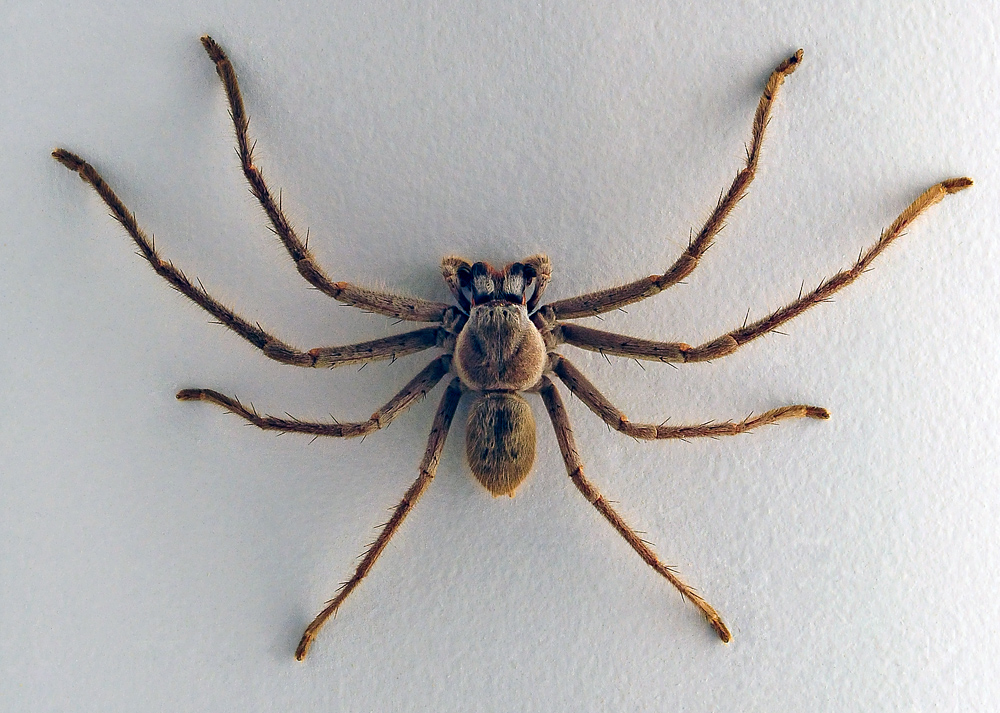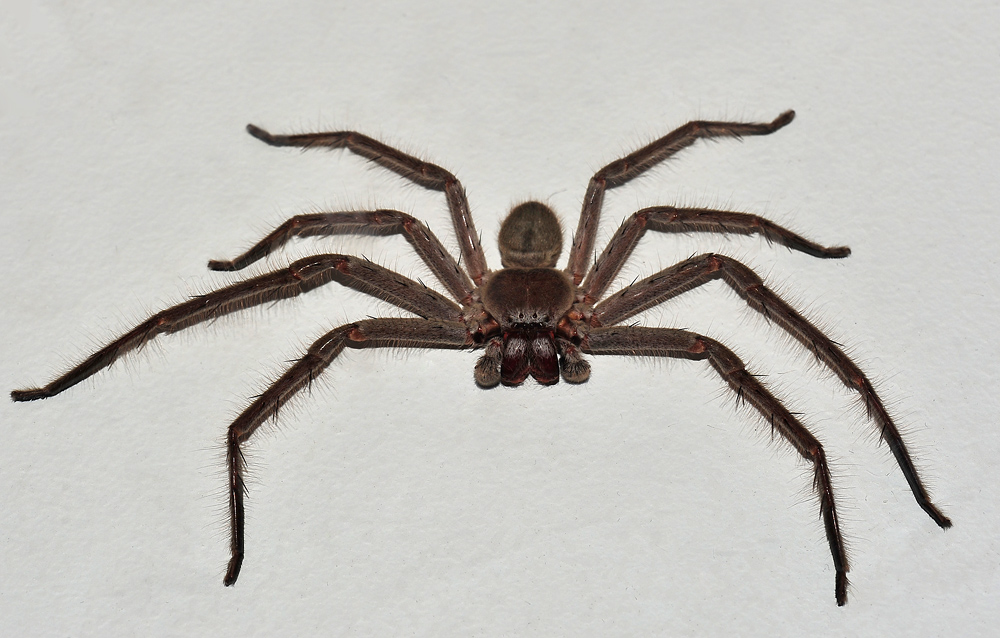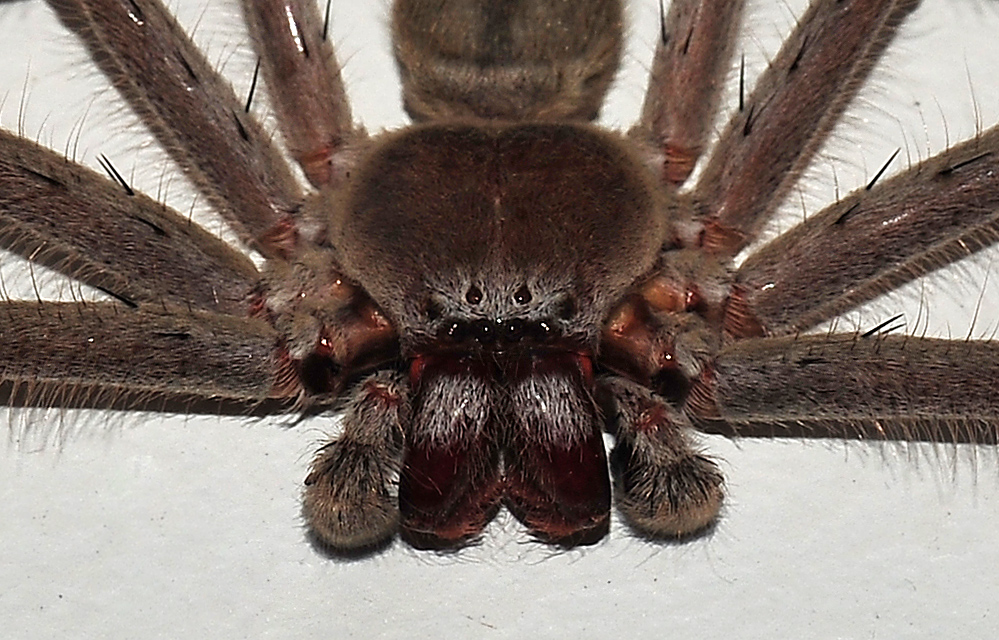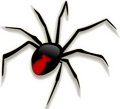Huntsman Spider
Isopeda sp.
 NEW There's an alternative version of this page at the new website www.ark.au/huntsman-spider.html NEW There's an alternative version of this page at the new website www.ark.au/huntsman-spider.html
Family:
Size: Male body 14-18 mm, Female 21-23 mm
Distribution: All over Australia
Habitat:
References:
About the Huntsman SpiderA great many Isopeda species are found all over Australia. Danger: I picked up a large huntsman in my hands once, when I was a teenager and I wanted to look tough. I would not recommend trying this (nor would I do it now) as they can bite. Though the bite is not deadly it can still hurt. Another time, an ex-girlfriend told me that her new boyfriend picked up one and it bit him on the hand :D Though it didn't do that much harm, just some pain. Based on these experiences it may be possible that they only bite bad people, and not good people.
Note that dead spiders usually fade in colour, so nearly all the spiders will look blacker or darker in colour in real life than they do in the photos of dead spiders from the museum. 
Photo taken at Australian Museum, Sydney. High Resolution 2712 x 2244.

Photo taken at Australian Museum, Sydney. High Resolution 3883 x 2437.

Photo taken at Australian Museum, Sydney.

Photo taken at Australian Museum, Sydney. High Resolution 4024 x 2708.
Recommended Reading
|
 A Field Guide to Spiders of Australia, by Robert Whyte and Greg Anderson.
A Field Guide to Spiders of Australia, by Robert Whyte and Greg Anderson. This is my favourite field guide to Australian spiders. It has a proper index. It has amazing photographs. If I had to find a weak point of it, it would be that there are so many photos that there is less writing than there could have been. I like photos though so it's all good. 464 pages. From the publisher, "A Field Guide to Spiders of Australia uses photographs of live animals to enable identification of commonly encountered spiders to the family level and, in some cases, to genus and species. Featuring over 1300 colour photographs, it is the most comprehensive account of Australian spiders ever published. With more than two-thirds of Australian spiders yet to be scientifically described, this book sets the scene for future explorations of our extraordinary Australian fauna."
Purchase from Amazon.com.au (Australian Site)
| See Also
Australian Mammals
Australian Birds
Australian Reptiles
Australian Frogs
Australian Fish
Australian Wild Plant Foods
Return to Australian Spiders
Return to Site Map
Share This Page
australian spiders
Content is copyright © Survival.ark.au 2005-2025 All Rights Reserved. Terms of Use. Definitely read the disclaimer before trying anything from this website, especially including the practices and skills. This website uses affiliate links – this doesn't cost you any more, but I get a commission on purchases made through the website. As an Amazon Associate I earn similarly from qualifying purchases.
|






